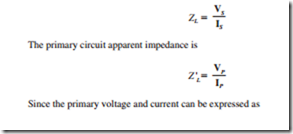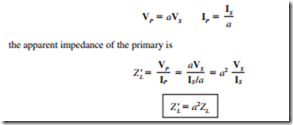 IMPEDANCE TRANSFORMATION THROUGH A TRANSFORMER
IMPEDANCE TRANSFORMATION THROUGH A TRANSFORMER
The impedance of a device is defined as the ratio of the phasor voltage across it to the phasor current flowing through it.
Since a transformer changes the current and voltage levels, it also changes the impedance of an element. The impedance of the load shown in Fig. 3.3b is
It is possible to match the magnitude of load impedance to a source impedance by simply selecting the proper turns ratio of a transformer.
Related posts:
Loudspeakers:Electrical Analogue
Careers in Electricity and Electronics:Careers in the electrical and electronics Field
Engine Valve System part5
Light and associated radiation:Liquid crystal displays (LCD)
The control transformer
Lighting Circuits:Ceiling Roses
AC Measurements:AC Meters
Autotransformer Starting
ELECTRONIC GADGETS AND HOME APPLIANCES – MOBILE RADIO SYSTEMS
Basic troubleshooting principles:Testing devices
The pole-changing method.
Engine Valve System part11
Speed Control for a Compound DC Motor
The Essentials of Computer Organization and Architecture - System Software

